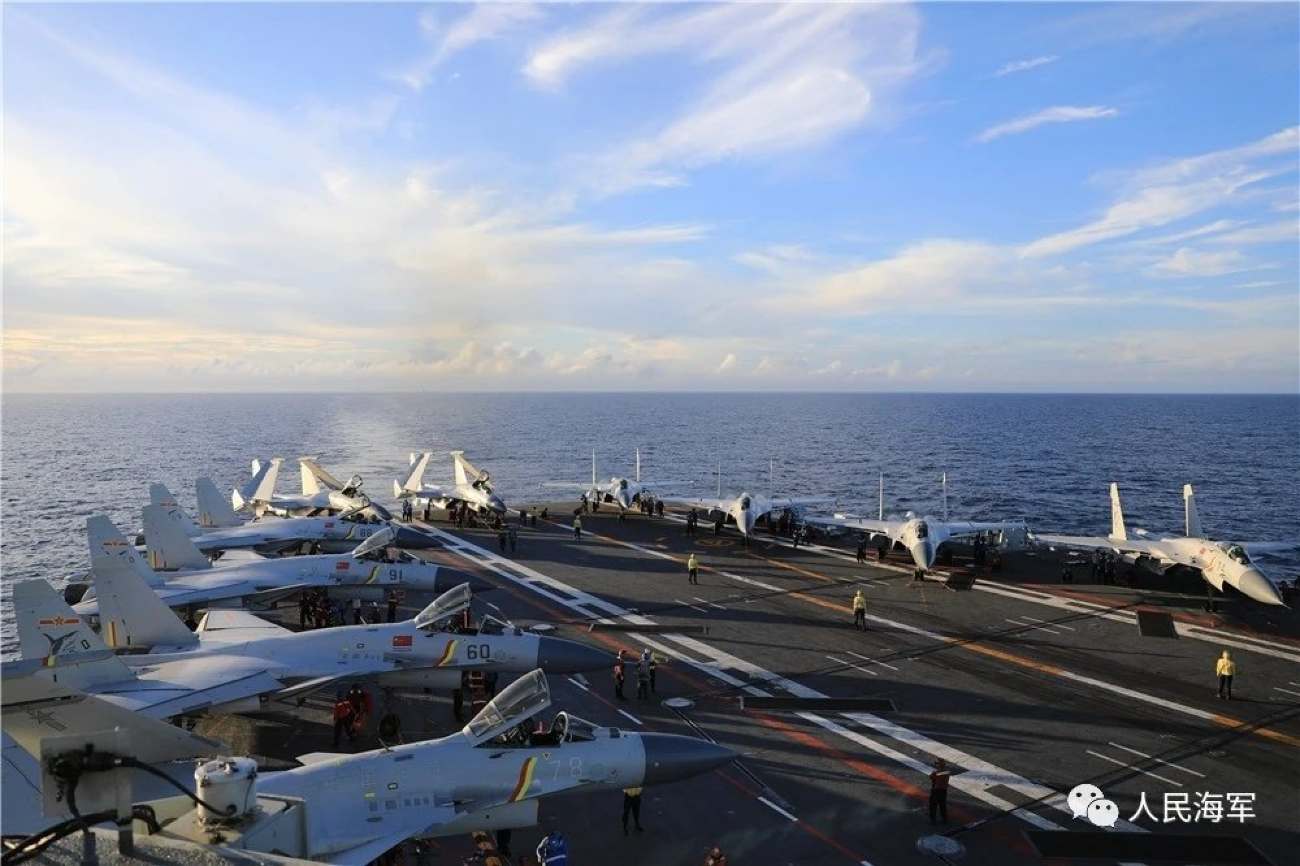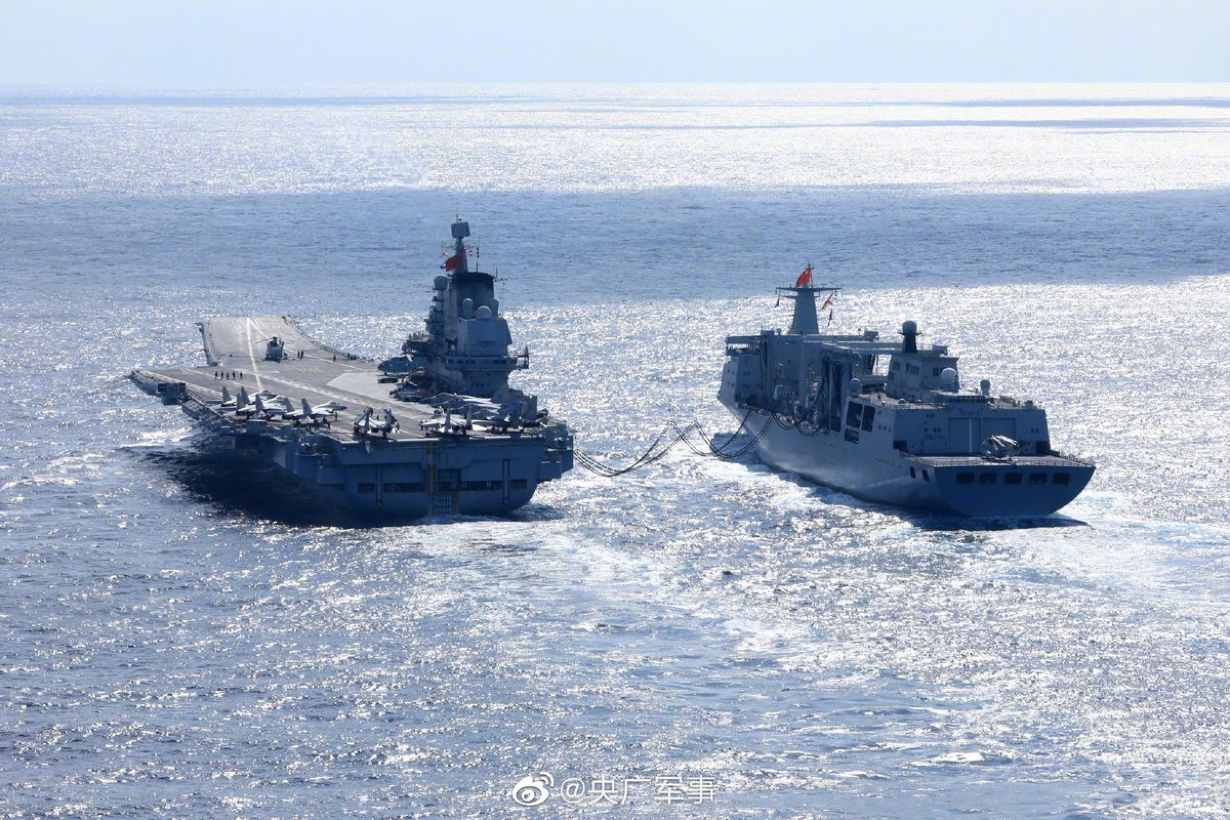Amid concern surrounding China’s burgeoning naval capability, a key Chinese political figure has hinted that a fourth aircraft carrier is on the way and the work on the carrier is proceeding smoothly.
CPEC Threatens 2nd India-China War In Eastern Ladakh; RUSI Report Says Conflict Possible By 2025-30
The political commissar of the Chinese People’s Liberation Army (PLA) Navy stated that his country would soon unveil its fourth aircraft carrier and address the question of whether or not it will be nuclear-powered, Chinese state-owned Global Times reported.
The announcement was made by Yuan Huazhi, a deputy in the National People’s Congress (NPC), in response to a query from the Hong Kong Commercial Daily. The information was revealed during Beijing’s annual parliamentary sessions, where People’s Liberation Army (PLA) representatives occasionally appear in public.
The announcement comes after China unveiled its latest military budget, which was increased by 7.2% to boost combat preparedness and advance defense research and development.
Yuan did not give a specific timeline for the development of this classified vessel. After China unveiled its third aircraft carrier, Fujian, there was speculation that another one was already in the pipeline. However, this is the first confirmation that a fourth carrier, likely codenamed ‘Type 004,’ is in the making.
Has China’s 4th aircraft carrier faced a “bottleneck”?
🇨🇳Navy Political Commissar:“Never heard of that”
Is it nuclear-powered?
He smiled: “You’ll know soon!”20 yrs ago,🇨🇳aircraft carrier battle group seemed out of reach. Today, we are expecting the 4th aircraft carrier’s name! pic.twitter.com/4u7iixwqzO
— Hu Xijin 胡锡进 (@HuXijin_GT) March 6, 2024
Following the announcement, the hashtag “China to unveil its fourth aircraft carrier soon” trended on the Chinese social media site Sina Weibo.
The images of the warship have been making the rounds on the internet for a while. The alleged fourth carrier is rumored to be under construction and was allegedly painted at the Jiangnan shipyard in Shanghai but there has been no official acknowledgement about it by Chinese authorities.
Last year, two pieces of artwork emerged from the shipyard, triggering speculation that it could be China’s next aircraft carrier design concept. The pictures showed a vessel that appeared to share certain general exterior characteristics with the Ford class of the United States Navy.
Based on photographs, it can be assumed that the design is identical to the Fujian and features a catapult-assisted takeoff but arrested recovery, or CATOBAR, configuration. The two carriers now in service with the PLAN are the Type 002 Shandong and Type 001 Liaoning, both of which are short takeoff but arrested recovery, or STOBAR, types distinguished by their ski jump-style bows.
Pour la 2ème fois en une semaine, le chantier naval Jiangnan Changxing, qui est en train de construire le 1er porte-avions CATOBAR chinois à propulsion conventionnelle, publie une illustration de ce qu'il pourrait être le prochain porte-avions nucléaire de la marine chinoise. pic.twitter.com/cARrDKAx5A
— East Pendulum (@HenriKenhmann) April 7, 2023
The artwork also featured several stealthy combat jets that resemble the Shenyang J-35 in appearance, if not exactly. The Type 004 would likely operate the FC-31 ‘Gyrfalcon’ 5th generation stealth fighter, currently being tested and improved for carrier operations.
The Chinese CATOBAR carrier will be equipped with a sophisticated electromagnetic aircraft launch system (EMALS) in the future, as Fujian has demonstrated. These are mere predictions, and all details about the Type 044 aircraft carrier remain classified to date.
Is Chinese Carrier Capability Expanding?
When asked a question concerning China’s ability to handle US aircraft carriers that have been stationed in the West Pacific, Yuan said, “Trust us, we can. We don’t just deal with aircraft carriers. We also deal with [potential threats] comprehensively.”
In response to a query concerning the disparities between Chinese and US aircraft carriers’ combat capacities, Yuan emphasized that China’s aircraft carrier program was not intended to compete with the US but rather to protect its territorial integrity, rights, and national sovereignty.
Multiple experts who reportedly spoke with the Global Times said that China was expected to eventually build more aircraft carriers in tandem with the PLA Navy’s efforts to develop a blue-water navy as part of its near- and far-water defense and protection strategy. This was expected to help China protect its interests in territorial integrity, national sovereignty, and development as a whole.
Considering benefits like long-range, some analysts predict China will build its next aircraft carrier using nuclear power. Currently, the US Nimitz and Gerald R. Ford class carriers and the French flagship Charles de Gaulle are the only nuclear-powered carriers in service worldwide.
Some other Chinese and Western analysts have noted that even the next Chinese carrier is expected to be conventionally powered owing to cost efficiency and faster development. With only two operational carriers in service right now, the PLA Navy is likely working to bolster the development and production of other planned vessels.

As the specter of war looms large over the Indo-Pacific with rampant tension in the Taiwan Strait and the South China Sea, aircraft carriers are believed to be crucial for both China and the United States. The US Navy intermittently dispatches its aircraft carriers for its ‘Freedom of Navigation Operations.’
In April last year, the United States and China deployed their respective aircraft carriers in the passageway between Taiwan and China. The PLAN Shandong aircraft carrier was spotted some 200 nautical miles East of Taiwan, while the USA’s Nimitz aircraft carrier was seen around 400 nautical miles off eastern Taiwan.
China has been feeling the heat of the US Navy’s multiple US aircraft carriers that have been simultaneously deployed in the Indo-Pacific in recent times (see detailed report here). In contrast, China was already operating the Shandong carrier as the Liaoning was away for a year for maintenance and repairs.

The US Navy, on its part, has also taken cognizance of China’s rapidly growing naval fleet and is making efforts to blunt the advantage that the PLA Navy has in terms of fleet size. Despite that, military experts believe that China trails the US in the maritime domain because of the US Navy’s superior carrier capabilities.
The US Navy has 11 nuclear-powered aircraft carriers against just two in the Chinese inventory that are diesel-fuel powered. China has two operational aircraft carriers – Liaoning and Shandong. The third carrier, Fujian, is still undergoing testing.
Additionally, four military attaches, and six defense analysts familiar with regional naval deployments told Reuters last year that China may need to wait over ten years to be able to deploy a serious carrier threat far from its shores. This assessment is after underscoring the Chinese carriers’ latest far-sea voyages into the Western Pacific.
President Xi Jinping’s vision of constructing “a great modern socialist country” includes the ruling Communist Party’s goal of elevating the People’s Liberation Army (PLA) to a “world-class” military force by 2049, which is reflected in the carrier program.
Even as it accelerates the work on its next carrier while the Fujian is still undergoing testing, Beijing seems to be sending a message that it is interested in catching up with the United States. However, western officials and military commentators don’t see that happening in the next decade.
- Contact the author at sakshi.tiwari9555 (at) gmail.com
- Follow EurAsian Times on Google News




